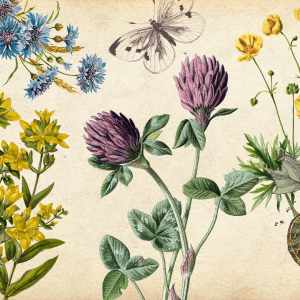
Annelise Jolley is a San Diego-based essayist and journalist covering food, ecology, faith, and the terrain between.
Posts By This Author
Holy Mary, Mother of Gardens
I BEGIN IN the garden, which sounds biblical but is literal. It’s the day after the spring equinox, and I’m standing outside the Basilica of the National Shrine of the Immaculate Conception in Washington, D.C. The National Shrine is the nation’s largest Roman Catholic church. It’s stuffed to the vaulted ceilings with religious art, but I’m not here for the soaring mosaics and gilded icons.
What I’ve come to see — the Shrine’s Mary garden — turns out to be underwhelming. A statue of the Virgin presides over an empty reflection pool; the garden’s central fountain is also dry. The circular stone terrace is flanked by cherry trees and dormant bushes. The rose bushes are pruned back, and the tulips have yet to open. Except for cherry blossoms unfurling overhead amid a hum of bees, much of the garden still sleeps from winter. I expected a profusion of tangled plants and lush greenery, but this early in the season, nothing much is blooming.
I came to the garden looking for evidence of a movement. Pope Francis’ 2015 encyclical “Laudato Si’: On Care for Our Common Home” called for a global ecological conversion. Inspired by a faith that views humans as Earth’s caretakers, and guided by the science behind native gardening, Catholics around the world have heeded the pope’s call by planting native habitats. Parishes, backyards, and schools are restoring land with local species. Some habitats take the form of Mary gardens: devotional spaces that both honor the Mother of God and enhance biodiversity. Other habitats convert manicured landscapes into pollinator gardens.
The gardeners who tend these spaces range from Girl Scouts to a pair of Instagram-savvy nuns; what they share is a belief that planting native species is a practical way to integrate their faith and environmental values — and to respond to the climate crisis.
Better Than a Wall

T photography / Shutterstock.com
FOR 18 YEARS, Ángel Pérez’s parcel sat barren. His remote village in southern Mexico offered no employment, and his only resource—his land—had been depleted by decades of overuse. When his son Manolo grew old enough, Manolo emigrated north to find work, following the footsteps of half the community and leaving his father behind. Desperation led Ángel to drink. Bottle in hand, he stared down his two options: leave his home, his community, and his land, or resign himself to a life of scarcity. (Ángel and Manolo are pseu-donyms used for privacy reasons.)
In 2014, a surge of Central American refugees streamed north through Mexico. They traveled under the stars through drug cartel territory, slipped past human traffickers, and arrived at the U.S. border pleading for sanctuary.
